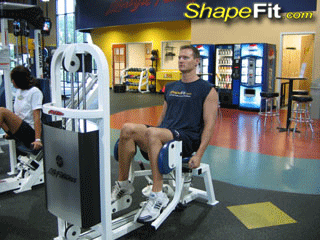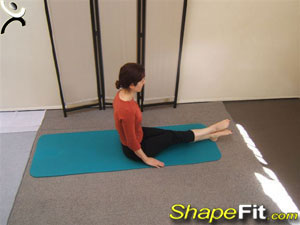Calorie Burned Per Day: Modern labor-savers mean calories saved
Calorie Burned Per Day: Modern labor-savers mean calories saved

There was a time when doing the housework really meant some hard work, and those day-to-day labors were part of what kept people fit.
Toting fire wood, scrubbing laundry in the washtub, even the walk out to the garden to gather a few vegetables for supper–these tasks helped our forebears burn off a lot of what they took in.
We’re still a few gadgets short of the automated, push-button utopia of The Jetsons, but every generation has conserved a few more calories as advances in technology and labor-saving devices have freed us of most of the physical effort involved in the mundane tasks of daily living.
Maybe your great-grandmother had the advantage of an automated washing machine, but clothes dryers weren’t standard in most American households until the last half of the 20th century, so she probably still had to burn a few calories hanging laundry on the line.
But by Grandma’s day, it was an auto-wash, an auto-dry and a noticeable savings of effort.
Obesity is an epidemic in the world’s wealthiest nations where, coincidentally, most everyone has access to modern conveniences. Not only that, but researchers say that sales of vehicles and labor-saving devices seem to track the increase in obesity.
So how much labor are we really saving doing various tasks with today’s modern, mechanized methods, as opposed to the elbow grease and effort of the “good old days?”
In one Australian study, the researchers measured the activity levels of male subjects’ who worked in a historical re-enactment of “Old Sydney Town,” as it was before the mechanization of the 19th century. They used a triaxial accelerometer–a device much like a pedometer, except that it measures more body movements–and they tracked subjects’ activity levels over the course of a week. Various controls were used to keep the results as true as possible to the levels likely for men of that era.
They contrasted the results to those of a group of men in modern occupations, like taxi drivers and accountants, who were also equipped with the accelerometers. Remember, this study measured movement, not calories expended, but over the course of a week, the researchers found the fellows living the old-fashioned lifestyle had 60 percent higher activity levels than the modern group. That’s going to amount to quite some difference in energy use, as well.
In a study at the Mayo Clinic, researchers looked at four specific activities, dishwashing, laundry, stair use and what they called “occupation-related transportation,” in other words, walking to work. This was walking at a pace subjects established as comfortable for getting from one place to another, as opposed to the sort of high-intensity walking folks might do for a work-out.
Each of the activities was compared to modern methods of accomplishing the same tasks, so the cleaning chores were done with appliances, the stairs were replaced with an elevator ride and the nice walk with a quick trip in the car.
Here’s what they found: As far as the dishes and laundry, they determined that subjects used only about 45 calories more on a daily basis in doing these tasks by hand, compared to loading the relevant machines, watching TV while they ran, and then putting the dishes or laundry away.
Now, to be fair, good scientific method required the researchers to be consistent, so they used a standard flour/water gloop every day to “dirty” both the dishes and the laundry in the study, not exactly real world. And anyone who’s ever tried to scrub dried, smeared spaghetti and meatballs off a 2-year-old’s dinner plate–or out of her clothes, for that matter--knows that not all messes are created equal.
Nevertheless, the bigger difference in work-related energy use was found in how we’re getting there and getting around once we’ve arrived. The researchers found that walking to work burns about 3.5 calories per minute, compared to about one calorie per minute expended on driving to work, and remember, there are a lot fewer minutes in the drive.
At work, where 99 percent of movement between floors is done on elevators, they found that subjects burned about 4.2 calories per minute using stairs, as opposed to 1.3 per minute using the elevator.
On the whole, it turned out that people burned 111 fewer calories each day on the four tasks using modern methods. Over a year, that adds up to about 10 pounds we could be needlessly packing on that our ancestors just a couple generations ago didn’t have to worry about.
Interestingly, it’s over the last couple generations that Americans have become so overweight, with the greatest increase in the last 10 years.
No one is suggesting we all take our laundry and washboards back down to the river, but we do have to compensate for how we’ve disrupted our energy balance with all these labor-savers. The difference in our daily burn rate is about what we’d expend with about 30 to 45 minutes per day of brisk exercise.
And that is just what most public health experts are suggesting–for just about everyone in our increasingly overweight America.
THROUGH THICK & THIN: Calorie Burned Per Day
History shows it’s easier to prevent weight gain than it is to achieve a weight loss. So, try planning some extra activity back into your day to increase your calorie burned per day rate. Try parking far out in the lot, using stairs instead of the elevator, washing your own car instead of using a drive-thru. And speaking of drive-thru, avoid those at meal time! Cooking your own dinner typically means you’ll eat less and burn more at each meal!
-
Military Press With One Arm – Kettlebell Exercise Guide
Exercise Advice: Take a shoulder width stance and hold
-
Seated Side Lateral Deltoid Raise – Shoulder Exercise Guide
Exercise Advice: Straddle a flat bench and grasp a dum
-
Clean Lunge – Kettlebell Exercise Guide with Photos
Exercise Advice: Take a wider than shoulder width stan
-
Gaining Weight By Exercising
Losing weight by exercising may not be as easy as it sounds. Sometimes
-
Leg Crunches – Medicine Ball Exercise Guide with Photos
Exercise Advice: Lie flat on your back on a mat with y
-
Pedometer Power
Health experts recommend wearing a pedometer with the goal of 10,000 s
- DON'T MISS
- V-Bar Pullups – Back Exercise Guide with Photos
- Standing Dumbbell Deltoid Press – Shoulder Exercise Guide
- Barbell Lunges – Hamstring Exercise Guide with Photos
- Rollover – Pilates Exercise Guide with Photos
- Medicine Ball Crunches on Exercise Ball – Abs Exercise Guide
- Push Ups on Exercise Ball – Instructional Guide with Photos
- Getting Back To It
- Bent Over Rear Deltoid Cable Raises – Shoulder Exercise Guide
- One Song Workout: New Romantics by Taylor Swift
- Rolling like a Ball – Pilates Exercise Guide with Photos




